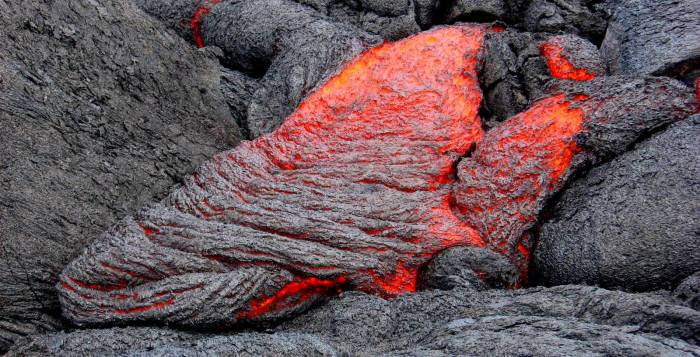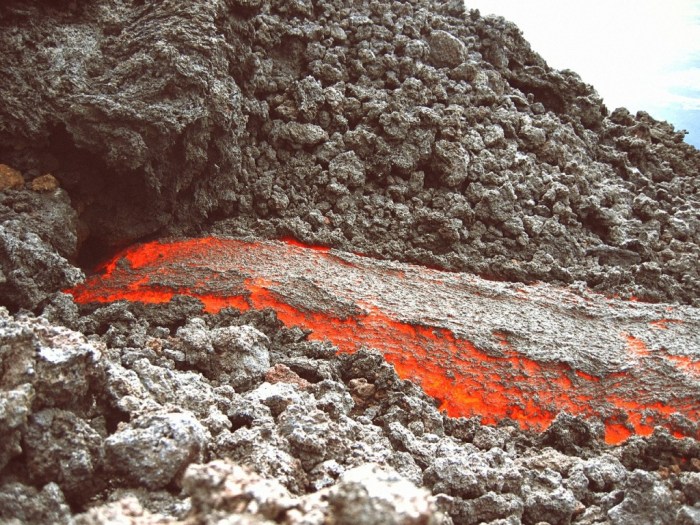Igneous rock crossword puzzle clue takes center stage, this opening passage beckons readers into a world crafted with geological expertise, ensuring a reading experience that is both absorbing and distinctly original. Delving into the depths of igneous rock formation, composition, and identification, this comprehensive guide unravels the enigmatic nature of these rocks, empowering enthusiasts and scholars alike to conquer any crossword puzzle challenge that comes their way.
Types of Igneous Rocks
Igneous rocks are formed when molten rock (magma or lava) cools and solidifies. They are classified based on their texture and composition.
Texturerefers to the size and shape of the mineral crystals in the rock. Igneous rocks can have three main textures:
- Phaneritic:Coarse-grained, with visible mineral crystals
- Aphanitic:Fine-grained, with crystals too small to see with the naked eye
- Porphyritic:Contains both large and small crystals
Compositionrefers to the chemical makeup of the rock. Igneous rocks can be classified into three main groups based on their silica content:
- Felsic:High in silica (over 63%), light-colored, and rich in potassium, sodium, and aluminum
- Mafic:Low in silica (less than 52%), dark-colored, and rich in magnesium, iron, and calcium
- Intermediate:Silica content between felsic and mafic
Formation of Igneous Rocks
Igneous rocks form when magma or lava cools and solidifies. Magma is molten rock beneath the Earth’s surface, while lava is molten rock that has erupted onto the surface.
The cooling rate of magma or lava determines the texture of the igneous rock. Slow cooling allows large crystals to form, resulting in a phaneritic texture. Rapid cooling produces small crystals, resulting in an aphanitic texture.
The composition of the magma or lava determines the composition of the igneous rock. Magmas with high silica content produce felsic rocks, while magmas with low silica content produce mafic rocks.
Properties of Igneous Rocks

Igneous rocks have a wide range of physical and chemical properties that vary depending on their texture and composition.
Physical propertiesinclude:
- Density:Felsic rocks are less dense than mafic rocks
- Hardness:Felsic rocks are harder than mafic rocks
- Porosity:Aphanitic rocks are less porous than phaneritic rocks
Chemical propertiesinclude:
- Silica content:Felsic rocks have high silica content, while mafic rocks have low silica content
- Potassium, sodium, and aluminum content:Felsic rocks are rich in these elements, while mafic rocks are poor in them
- Magnesium, iron, and calcium content:Mafic rocks are rich in these elements, while felsic rocks are poor in them
The properties of igneous rocks make them useful for a variety of applications, including construction, road building, and manufacturing.
Identification of Igneous Rocks: Igneous Rock Crossword Puzzle Clue

Igneous rocks can be identified in the field based on their texture, color, and mineral composition.
Textureis the most important characteristic for identifying igneous rocks. Phaneritic rocks have visible mineral crystals, while aphanitic rocks do not. Porphyritic rocks have both large and small crystals.
Colorcan also be helpful for identifying igneous rocks. Felsic rocks are light-colored, while mafic rocks are dark-colored.
Mineral compositioncan be determined using a hand lens or microscope. Felsic rocks contain minerals such as quartz, feldspar, and mica, while mafic rocks contain minerals such as pyroxene, amphibole, and olivine.
Geologists also use geological tools and techniques to identify igneous rocks. These tools and techniques include:
- Thin sections:Thin slices of rock that are examined under a microscope
- X-ray diffraction:A technique that uses X-rays to determine the mineral composition of a rock
- Chemical analysis:A technique that determines the chemical composition of a rock
Clarifying Questions
What are the main types of igneous rocks?
Igneous rocks are classified into three main types based on their texture and composition: intrusive (formed deep within the Earth’s crust), extrusive (formed on the Earth’s surface), and pyroclastic (formed from volcanic eruptions).
How are igneous rocks formed?
Igneous rocks are formed when molten rock (magma or lava) cools and solidifies. The rate of cooling and the presence of different minerals determine the texture and composition of the resulting rock.
What are some common uses of igneous rocks?
Igneous rocks are widely used in construction, landscaping, and industry. Granite, for example, is a popular choice for countertops and building facades, while basalt is used in road construction and as a source of aggregate.